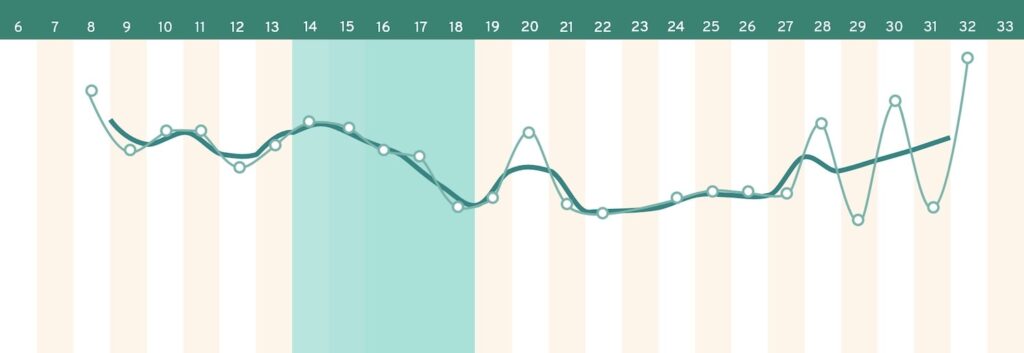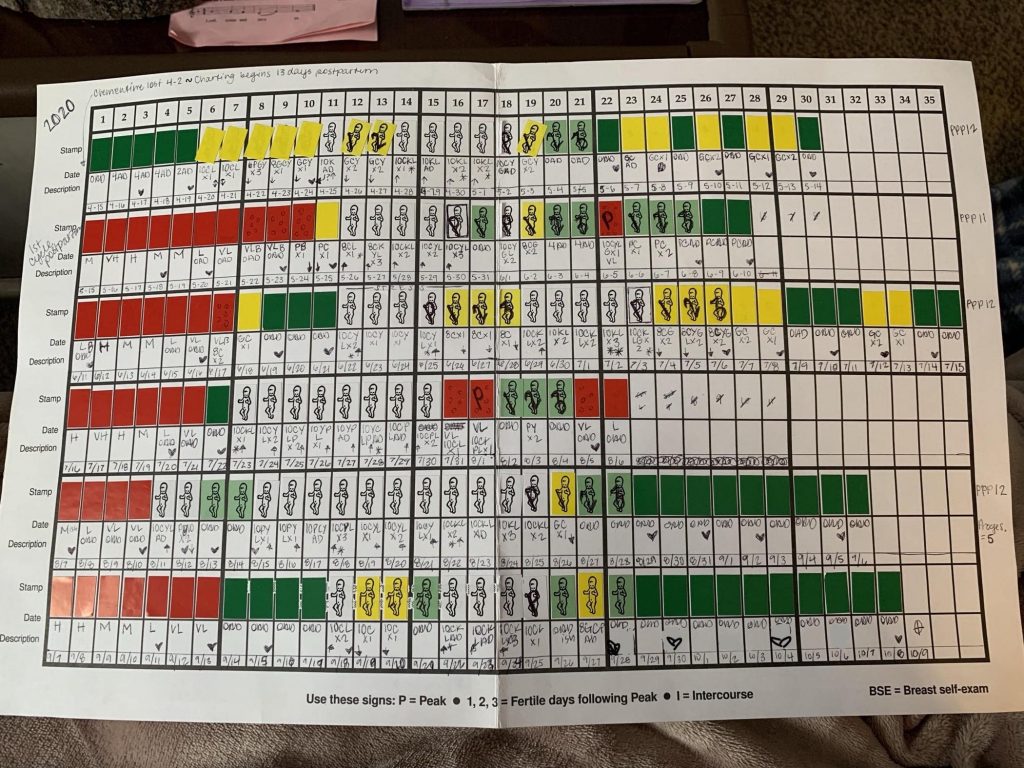In the last blog we brought you a story of a woman who uses kegg to compliment her Sympto-Thermal Method and today we share a story of an anonymized Creighton user.
kegg is a fertility tracker which measures the change in concentration of electrolytes in the cervical fluid with only a two-minute test a day. The composition of these electrolytes change in response to the cyclical hormonal fluctuations. As a result, women who use kegg are able to predict their fertile window in advance with real-time data. While the Creighton method observes the qualitative features of cervical mucus, kegg strictly measures the electrolyte composition. What women observe as stretchy, slippery or egg-white mucus is the result of changing compositions of free electrolytes. Cervical mucus is composed of minerals and metals, such as sodium, potassium, calcium, magnesium, zinc, copper, and iron. As a woman approaches ovulation, the concentration changes.
The Creighton Model FertilityCare System is a cervical mucus only fertility awareness method based on a woman’s observations collected at every restroom visit. As a long-time confident user of the Creighton Method, it was an interesting case study to analyze the comparison of the fertile window provided by Creighton & kegg. The kegg user was able to collect data of 1 “complete” cycle (cycle resulted in intentional conception) however the insights kegg offers were fascinating. Let’s read her direct testimonial and her kegg experience in her own words.
What is “The Creighton Model FertilityCare™ System”?
Creighton is a method of fertility tracking founded in 1981 by Dr. Thomas Hilgers. Dr. Hilgers today is the founder and director of the Saint Paul VI Institute for the Study of Human Reproduction in Omaha, NE. Coinciding the development of Creighton was Dr. Hilgers development of NaProTECHNOLOGY which is a fully restorative approach to the female reproductive cycle meaning NaPro treats and heals any gynecology concern without the use of hormonal contraceptives.
Based on the knowledge we have about the human biological valve within the cervix, we know that our fertile cervical mucus creates wide-open swimming channels for sperm. This mucus is much thinner, stretchier, clearer in color, and creates a high drama slippery sensation. This discharge we can observe with ease! Estrogen is the hormone leading up to ovulation and the mucus indicates that ovulation is approaching. Cervical mucus serves as a hospitable environment for sperm to survive, thrive, live, and be nurtured for up to 5 days, and in extreme cases, even longer. Cervical mucus is so critical in understanding fertility!
I was intrigued and curious about kegg, as it involves the key sign to fertility: MUCUS! But, it considers mucus in a completely different light. The electrolyte changes in mucus had never occurred to me, as the Creighton method charts the features of mucus and not the electrolyte composition, but understanding that mucus changes by sight and feel, it would make sense that there would be other aspects within mucus that shift.
kegg advantages
There are multiple attributes that impressed me about kegg. It certainly makes a good first impression. The branding and packaging itself are very modern, sleek, and aesthetically pleasing (and plastic-free!). Moving toward the device itself: it was smaller than I anticipated (which I liked!). The sleek silicone design makes for simple and easy application and the 2-minute testing can be done with ease.
The app is very user-friendly and the chart is simple and straightforward. The kegg app has the added benefit of entering additional signs so if desired you can track flow, LH, Proov (at home PDG testing) temperature, intercourse and now also pregnancy!
Did my fertile window with Creighton and kegg line up?
It is important to note that kegg needs to learn your baseline trend, which it gathers during the first cycle. kegg relies on your cycle length for its predictions for the first cycle only, as it does not have any baseline data. All future cycle predictions are based on the kegg method which means kegg uses your trend data to accurately predict your fertile window based on your electrolyte patterns. Given that this was my first chart, I didn’t have a full recorded cycle for it to gather trend data and therefore I knew that my green prediction window would likely not line up perfectly for this one cycle.
When looking at kegg charts, keep in mind that kegg is plotting electrolyte measures and not temperature (though you can add this through the kegg app as well). Basal body temperature charts and kegg charts look quite different. The fertile window typically looks like a valley or descending values between two peaks. Typically, we see low values during the ovulation window followed by a spike, usually indicating a shift to progesterone production, once ovulation has occurred.
We used 2 fertile days in the cycle in an attempt to conceive: the very first day that I observed fertile mucus, and the Creighton Model P+3. Both of these days were considered “low” fertile days according to my kegg prediction, but my trend line suggested I was in this “ovulation window” that kegg describes as the low valleys between the two peaks. kegg noted “probable” and “likely” right alongside my highest fertile time frame indicated by my Creighton chart. My Creighton chart had a couple of days before and after that would add on fertile days but beyond that, 95% lined up with my Creighton chart. I was very pleased!
Surprise! My first cycle resulted in conception.


Some users may feel a bit challenged with timing their use of kegg, as it is not recommended that you test within 8 hours of having sex, to avoid skewing the electrolyte data This probably wouldn’t be a drawback for most but pairing as a Creighton user, there already is a narrow window so adding more guidelines was a slight disadvantage to juggle. kegg allows you to schedule a daily reminder when it is most convenient for you to prevent issues with recording daily results. Creighton for example only allows intercourse at the end of the day during the preovulatory phase and any time of day in the post-ovulatory phase. Because of this, there is only about a 10-day time frame every month that the parameters for intercourse are more open to morning, afternoon, etc, however, I had to be mindful of my kegg observations throughout to not throw off my reading.
Women I would recommend to use this:
There is certainly a perfect audience user for this device.
- Some of my infertility clients find mucus observations to be a daily or constant reminder of the underlying struggle (infertility). For these women, I would recommend something like this to help simplify the observation to 1x/day vs. all day long observing
- I would also suggest kegg to women who suddenly became extremely busy and they are struggling with finding more than 2 minutes a day to monitor their cervical mucus
- Last, kegg is suitable for those who are experiencing a low quantity of cervical fluid
Eager to learn more? Learn how to use the Billings method in companion with kegg.
